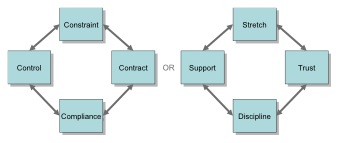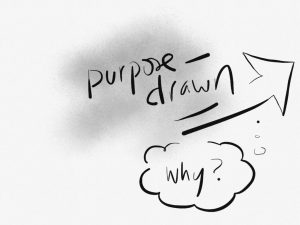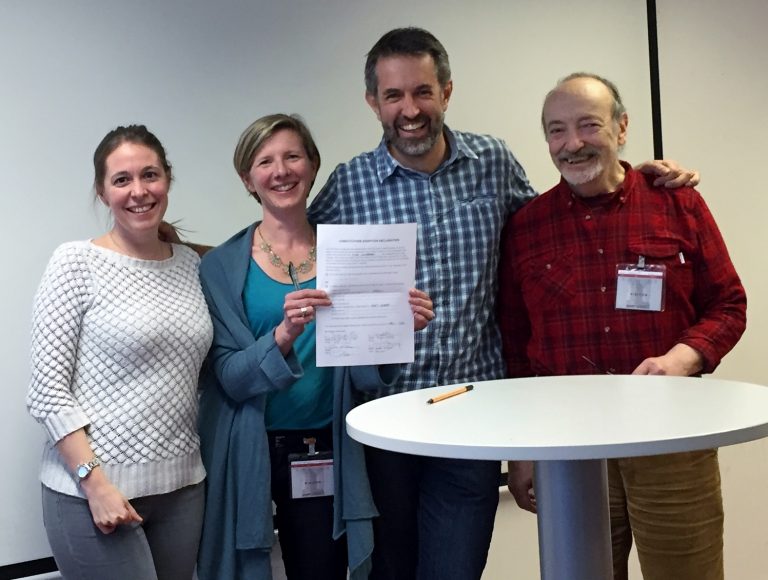Reassessing how a values systems drive performance
I’ve spent many happy weeks facilitating in Fontainebleau, France, over the past two years. We have been delivering an executive talent programme for one of our clients, in partnership with INSEAD Business School. On the odd occasion that there is time free in the evening or before the train back to London, I take a walk in beautiful Fontainebleau forest. Not only does the forest have an incredibly calming, energising effect on me; it also reminds me of one of my earlier Organisational Development projects, back in my days at P&G. At the time, we used a video of Sumantra Goshal, once an INSEAD professor, speaking at the World Ecomomic Forum. He talked about organisational culture as “The Smell of the Place”. (You can just tell what the culture is like when you walk in.) I must have watched this video 20-30 times, as one does in a “roll-out”. So, 10+ years on, I still remember Goshal’s turn of phrase.
He contrasted Fontainebleau forest in the spring with his native Kolkata in the summer. In the forest, he said, you would want to “run, jump and catch a twig”. (I would agree.) In downtown Kolkata, in contrast, you just wanted to laze around all day. Too many of our organisations, he asserted, are like Kolkata in the summer. Our challenge as leaders is to create more of the vibrant environment of Fontainebleau forest in the spring within our organisations.
Over the years of working in organisations, I’ve certainly seen cultures on both ends of the spectrum. And I think you’ll agree that the impact on effectiveness, productivity, purposefulness and personal fulfilment is marked.
Goshal went further to characterise the Kolkata culture with four words: Constraint, Compliance, Control, Contract. In contrast, Fontainebleau forest cultures can be created by putting the emphasis on Stretch, Discipline, Support and Trust.
So here, using Goshal’s model, are some of the challenges I like to put to leaders trying to build high-performance cultures in their organisations.
From Constraint to Stretch
I recently worked with a senior business sponsor on a programme who was fond of saying that the challenge for each of us was to be “the best version of ourselves”. Are the systems, policies, processes and structures you have set up in your organisation really empowering people to be their “best version”? What about “who you’re being” as a leader? Right now, how much of “themselves” is each your people able to bring to their work? And how much does this stretch your organisation towards achieving its goals – growing your business, gaining market share, better serving your customers or communities – in good times and in bad? Give yourselves a score out of 10 right now for your degree of individual and collective stretch towards what truly matters. And then, out of 10, where would you like to be? What do you need to do, and stop doing, to get to the desired score?
From Compliance to Discipline
In a compliance culture, the strategy is set at the top, and people simply fulfil on these goals, or fail at their peril. In a discipline culture, in comparison, the leadership galvanise the organisation around an exciting ambition and a clear set of values. Individuals exercise high degrees of self-discipline to achieve their “stretch” and deliver on their commitments. In the language of the Action Cycle which we are fond of, performers build high trust and integrity with their various (internal) customers left, right, up, down and across organisational silos. Accountability is high, not because individuals are policed by the “machine” of performance management, but because they want to fulfil the organisation’s purpose. (Possibly because they see how it links to their own!) Ask yourself: how self-disciplined are people in our organisation? How much do we have to compensate for their lack of discipline by driving a compliance culture? If we have done so, how might we break this cycle?
From Control to Support
If people are stretched and self-disciplined, we don’t need to control them. The role of line manager becomes coach, mentor, champion, guide. A friend in South Africa once worked for a hugely successful IT company, which had grown exponentially in the 90s, still led by its founder. At her induction, the founder told her class that with each new person who joined, he felt there was one more person he worked for. I like this turnaround. To what extent do you create opportunity and possibility for your people, versus constraint, control and compliance? In practical terms, are you available to help them learn, grow, remove roadblocks and recover their confidence after setbacks?
From Contract to Trust
The traditional model of work is that it is a “contract” between the individual and the business. I was amazed once, while facilitating a module on developmental feedback – “delivering powerful assessments” – with a UK local authority. The pushback was “well, I can’t give ongoing feedback to my staff. Human Resources need to be present whenever I do.” If our organisations become so contractual that we can’t even play one of the most important coaching functions because of contractual constraint, where is the hope of stretch and discipline? Goshal describes it thus: “You know, we are a part of the same organisation and I trust you. I trust you enough to let go of you in the organisational trapeze.” Of course, we still need quality control systems, regulatory compliance, the eye of an expert over important deliverables to the customer, and so on. But how can we do this when it is truly needed, rather than out of a contractual dogmatism derived from a control mindset? What steps do you need, as a leader, to build high trust – both ways – with your team? Is the cost of allowing a little more freedom really greater than the cost of denying it?
More than ten years on, I still really like Goshal’s model. I see that you need all the elements in place to make a thriving culture and a successful business. I have seen organisations take the “cool-aid” of “organisational democracy” or an “empowering culture”, and choosing stretch or trust, while ignoring the needs for discipline and support. I have also seen organisations which desire to create innovative cultures, but kill them with compliance or control. The “sweet spot” is getting four-out-of-four.
Reconsider the loop you’re on
The two loops: Constraint-Compliance-Control-Contract versus Stretch-Discipline-Support-Trust – become vicious or virtuous cycles. As a client once said , “there are only two types of relationships: those that are getting better, and those that are getting worse”. The same might be true of organisational cultures. As a leader in your team or organisation, are you causing an upward or downward cultural spiral? And if downward, what do you need to do to press the pause button, own up to the past, have an authentic conversation with your team, and begin the slow but upwardly-snowballing climb towards the agility of Fontainebleau forest in the Spring? At a very personal level, which of your patterns (read: neuroses, “there-I-go-again” habits, blocks, fears etc) are holding you back from building the culture you most need? (Hint: ask your people. I’ll be doing so with ours.)
Looking to create positive change for your organisational culture? Email Mark to find out more about how he has done it with clients and as MD of Future Considerations.




